Do you often linger a safe distance away from the fish counter at your grocery store, too nervous or afraid to request a fillet or two of something fresh?
If your usual protein standby is a prepackaged pair of chicken breasts or a simple pork loin, it’s time to finally step outside of your cooking comfort zone!
When figuring out how to buy and cook fish, that’s where a lot of us hit a stumbling block – and it’s the usual reason why many of us tend to avoid locking eyes with the fishmonger.
When we don’t know different cooking techniques for fish, we tend to fall back on our old tried-and-true proteins for quick and easy meals.
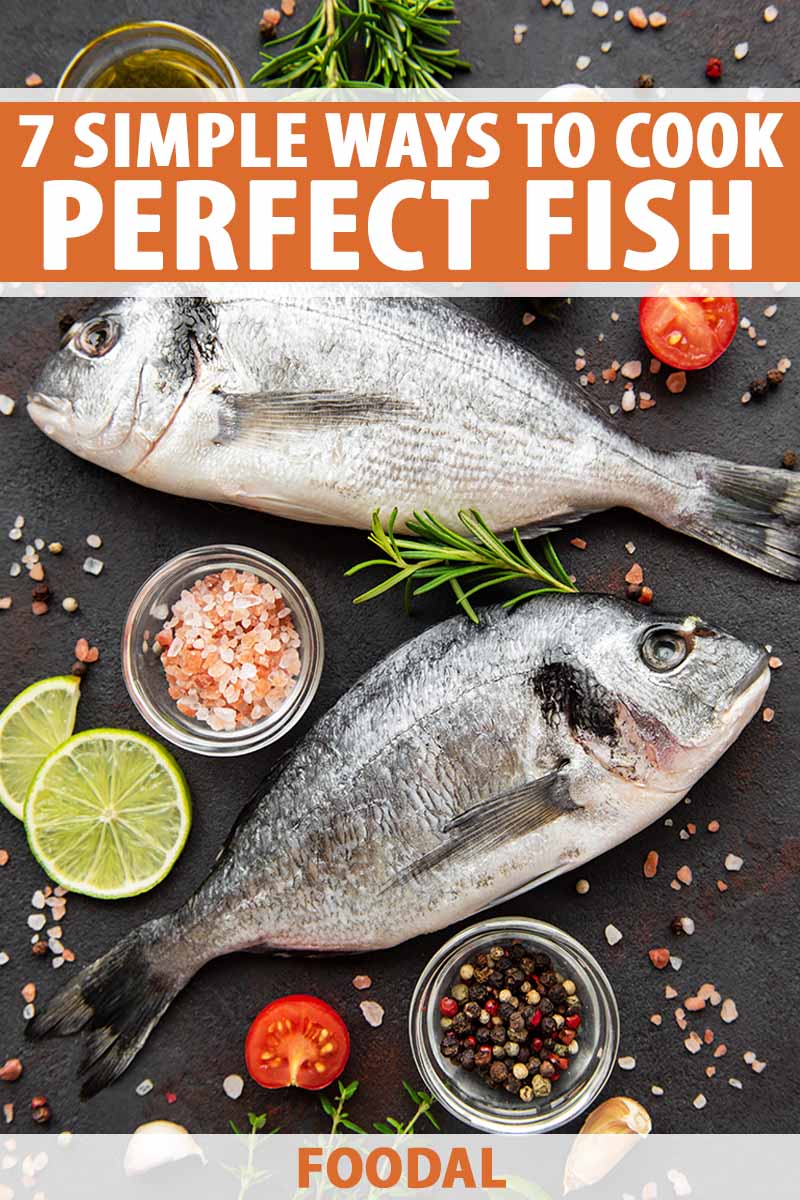
We link to vendors to help you find relevant products. If you buy from one of our links, we may earn a commission.
There’s a lost opportunity to have fun exploring new and unfamiliar recipes – let’s fix that now!
Rather than continuing hitting the replay button on cooking, there’s no time like the present to set aside the usual hits and go for something new, fresh, and exciting.
In this article, we’ll introduce you to seven simple ways to cook moist and delicious fish every time, and we’ll offer some tasty recipe suggestions for you to try.
7 Simple Ways to Cook Perfect Fish
1. Baking
Baking is an easy method of cooking that works well with either fillets or steaks. The trick to successfully baking juicy seafood is to watch the time carefully.
Oily fish are very well-suited for baking, as they more easily retain their moisture throughout the high-heat cooking process, whereas the leaner varieties will dry out quickly. And so will thin fillets.
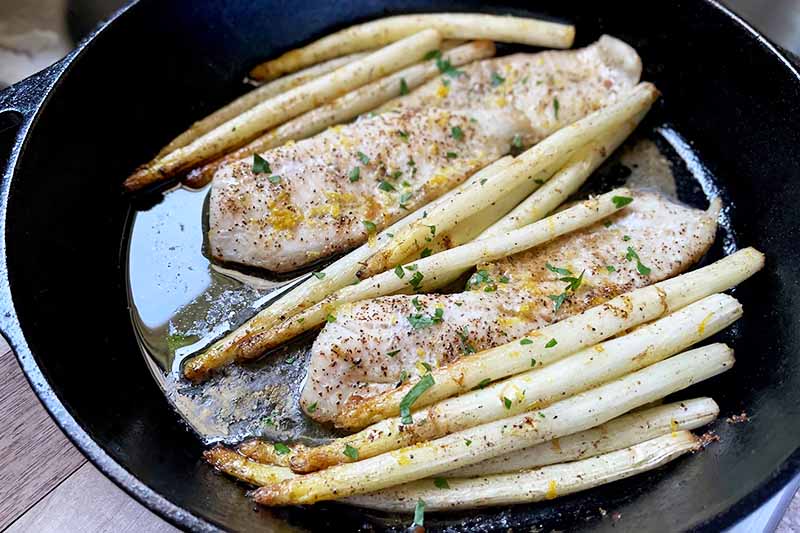
If you do use a fish that’s lighter in natural oils – such as haddock or cod – check for doneness a few minutes earlier than you would for something like salmon, and remove from the oven as soon as the flesh is firm when you gently press it with your finger.
Baked fish always works beautifully on its own, with a simple seasoning of salt, pepper, olive oil, and a squeeze of lemon. But gussying it up a bit is nice, as well!
You can scatter finely minced herbs atop pretty much any freshwater or seafood selection.
Or, lightly brush with a thin sauce first. A melted compound butter is an easy choice, and so is making a simple sauce with mustard, a drop or two of olive oil, and some minced herbs.
It’s important to go light with the seasonings on more delicate selections to retain the fish’s nutritional value and natural character. You want to enhance the flavor, not drown it.
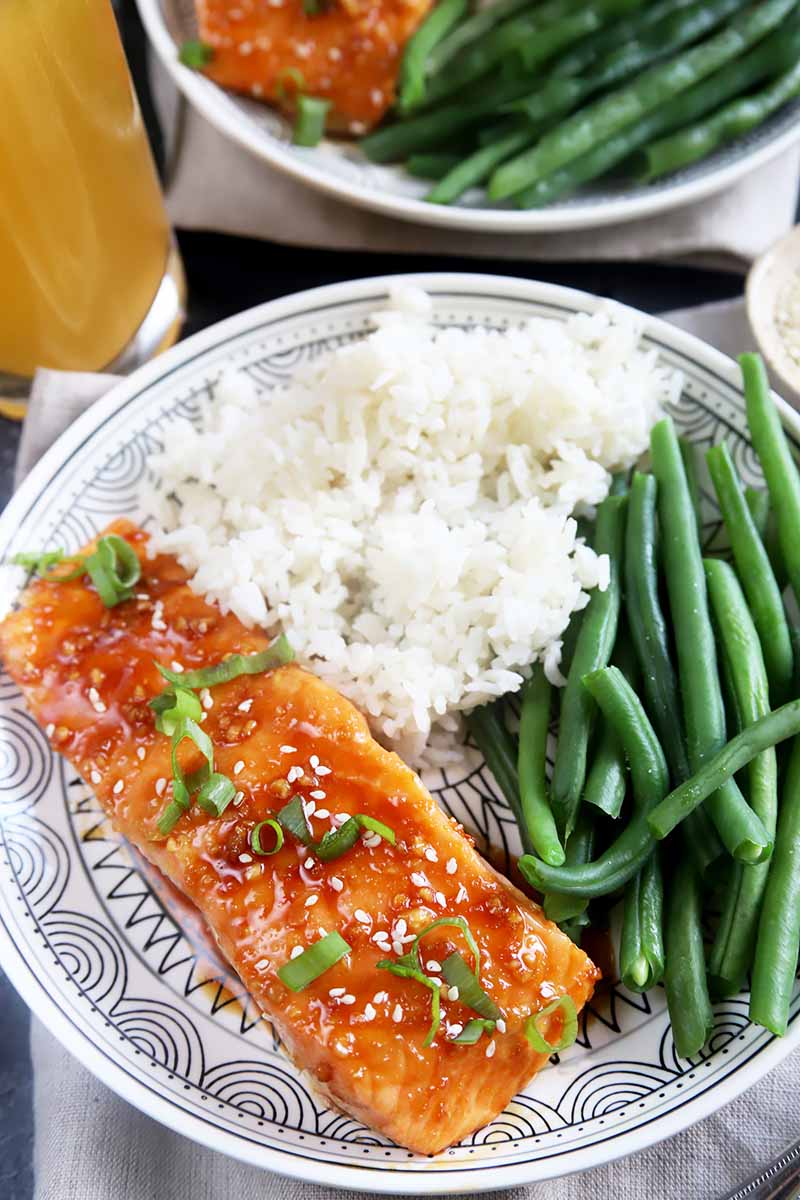
This little rule is followed to perfection in our recipe for baked tilapia with white asparagus, enhanced only with oil, butter, salt, black pepper, lemon, and parsley.
You can apply bolder, bigger flavors with oily fish that have more girth, such as salmon.
The avid pursuers of flavor will love our honey ginger salmon recipe, as well as our chipotle lime salmon recipe – in both of these recipes, we brush the fillets with sauces that pack a strong punch!
2. Broiling
Broiling is a method that uses a dry and incredibly high heat.
It works best on thick, even cuts of fillets, as well as fish steaks – the thin edges of unevenly butchered fillets will tend to dry out, and potentially burn, before the meaty part is fully cooked.
When broiling, the fish will also benefit from some external moisture, either brushed on prior to broiling or basted routinely throughout the short cooking process.

Season and brush with some olive oil, or make a thin, light sauce.
We recommend placing the steaks or thick fillets on a broiler rack and broil about four inches below the heat source for five to eight minutes per side, or until firm and opaque at the thickest part.
Allow an additional one to two minutes of cooking time for steaks that are thicker than one inch.
For pieces less than one inch thick, broil closer to the heat and reduce the broiling time. Due to their thin size, you will not need to turn the pieces over to continue cooking.
However, if you are broiling skin-on fish, which we use in our broiled salmon with shiitakes and parmesan grits, you should only broil the side with the skin on top, in order to properly develop a crispy exterior.
3. Deep Frying
While deep frying isn’t the healthiest method for cooking fish, the occasional fry-up is always a savory treat to enjoy until the very last crumb is consumed!
Follow these tips to for light and crispy golden-brown fish:
If you have a deep fryer, follow the manufacturer’s instructions. And if you don’t, you can use a large pot with deep walls and a heavy bottom.
Make sure to use the right kind of oil for deep fat frying! A neutral-tasting oil with a high smoke point, like canola or peanut, will do the trick here.
With deep frying, the correct temperature is very important, so you should purchase a thermometer for the most accurate reading.
The ideal temperature range for frying is 350-375°F. Below that, your food will become too soggy and greasy. Above that, your food will quickly burn.
Before heating the oil, which should be done gradually, have your favorite batter ready for dipping the fish.
And ensure that your pieces have been patted dry with a paper towel, as any excess moisture will cause the hot oil to splatter – and these burns are painful!
When the oil’s ready, dip the fish in the batter, and then lower it quickly – but carefully and gently – into the fryer. Start with only two pieces, and cook for about 2 minutes per 1/2-inch thickness, then gently roll to the other side with a heatproof spoon or tongs.
After rolling, add another two pieces, cooking for 2 minutes and then rolling.
Adding too many pieces at once will cause the oil temperature to drop, resulting in soggy, oily pieces. Waiting a couple of minutes before adding more will allow the temperature to recover, resulting in crisp, light fish.
Once both sides are golden brown, remove with a spider strainer and drain on paper towels on a large plate or on a rack over a baking sheet, gently patting the tops dry.
Deep frying is quick, so mind your time and keep an eye on what’s happening in the pot.
And it’s best to enjoy your crisp creations immediately – the perfectly crunchy exterior won’t last forever!
4. Grilling
The grill is calling to you – get your charcoal or gas grill ready, and let’s cook outside!
Grilling is a superb way to quickly and healthfully cook fish, retaining their tender, juicy texture. And the kiss of smoke is a divine flavor component!

When grilling fish, I find it helpful to pre-heat the grill on high, then reduce the temperature to medium. This way, with the grate or grill pan nice and hot, the fish gets a quick sear but cooks at a lower temperature.
As with broiling, thicker pieces such as whole fish, robust fillets, and steaks are more appropriate for grilling than thin pieces.
Thin or delicate fillets can still be grilled successfully, but you many want to invest in a grilling basket to prevent them from falling apart when they’re moved – a basket can also be helpful when grilling larger pieces for the same reason.
BBQ Guys Signature Non-Stick Fish Grill Basket
We recommend the Signature Non-Stick Fish Grill Basket, available now from BBQ Guys.
A metal pizza peel is another handy tool to use when removing large fillets or whole fish from the grill. Consider purchasing the Weber Stainless Steel Pizza Peel with a folding handle, available now from BBQ Guys.
Weber Stainless Steel Pizza Peel
To prevent sticking, lightly coat the grate or grill pan with cooking oil before heating.
A simply grilled piece of fish doesn’t need too many accompaniments upon serving – our recipe for grilled salmon with creamy dill sauce will school you in the art of fresh simplicity!
A marinade is beneficial for healthy results, and to add extra moisture and flavor. For the most comprehensive steps on making and using a marinade, you’ll find a lot of great advice in our recipe for Brazilian fish kebabs.
For a fun take on grilled fish, ditch the fillets and opt to make burgers instead! You’ll feel like a culinary creative with our grilled salmon burgers, served with a green goddess dressing.
5. Pan Frying
Pan frying works well for most fillets, and results in tender pieces with a crispy, light crust.
And firm-fleshed fish – such as halibut or cod – can be cut into chunks and quickly seared over high heat in a stir fry.
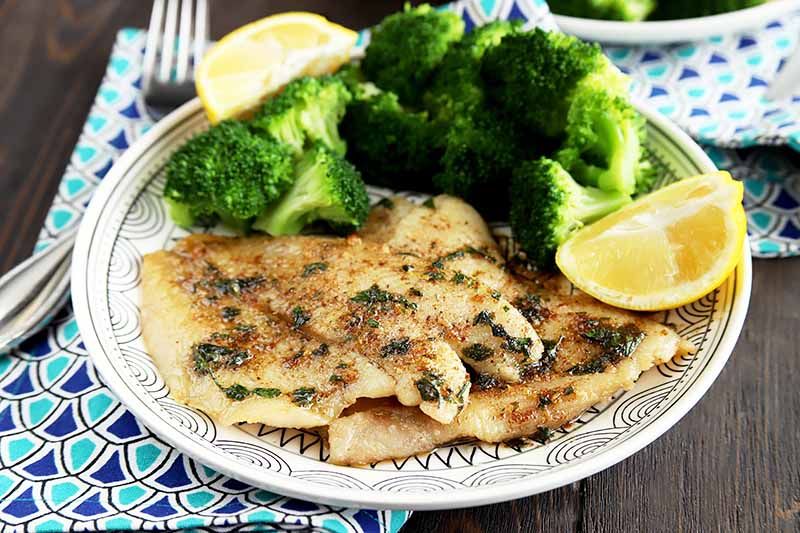
Use the appropriate skillet for the job, an option that either has enough seasoning, such as a well-used and well-maintained cast iron skillet, or a skillet that has a nonstick surface. You don’t want your fish to stick to the pan!
For more ideas on what types of pans to use for cooking excellent seafood, review our complete guide to choosing the best skillets for any purpose.
For the perfect French flair, sole meunière, fish cooked in a brown butter sauce, encapsulates this cooking style perfectly. And it can be on the dinner table in 15 minutes.
This method is also the best opportunity to develop a browned, crisp crust. Seek out recipes that utilize an exterior breading. On busy weeknights, our quick and easy 20-minute parmesan tilapia is a go-to choice.
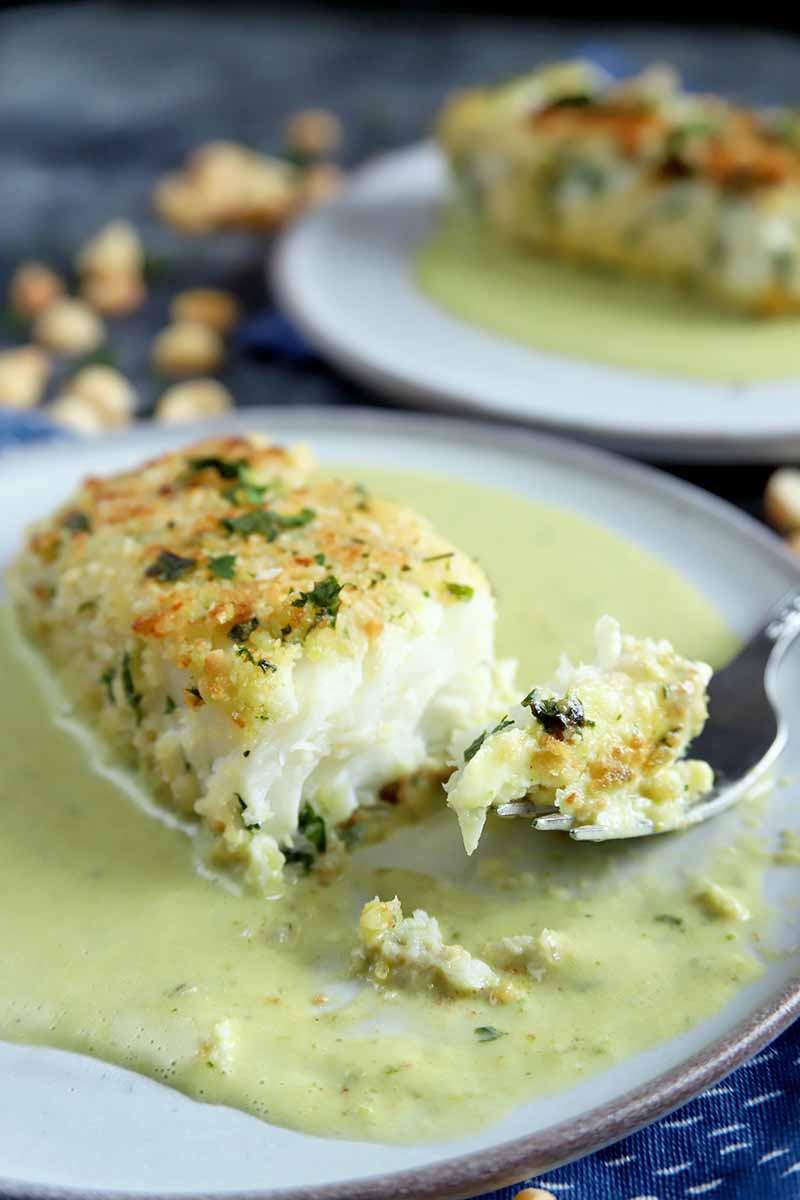
For more elegant occasions, you’ll be proud serving your guests this gorgeous halibut encrusted in macadamia nuts with a coconut sauce.
Make sure you have enough fat in the pan, and try to handle the fish as little as possible as it cooks – if you move it around too much, it will break apart in the pan and won’t develop a crispy exterior.
6. Poaching
Poaching is a moist-heat method of cooking, and it works well with selections that have a more robust, firm flesh such as halibut and salmon.
They can be cooked gently in a variety of heated liquids such as water, apple juice, wine, stock, miso broth, or milk.
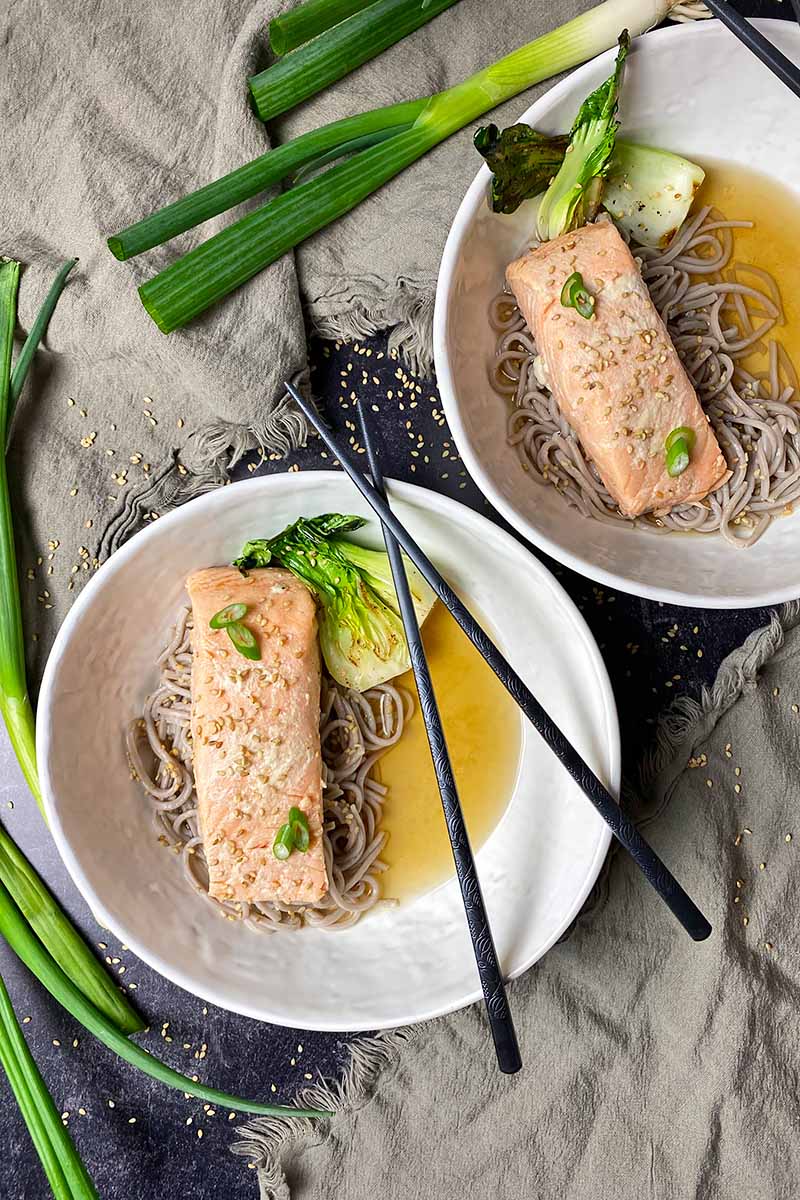
And the flavor of poached fish can be enhanced with a variety of seasonings like fresh herbs, spices, leeks, onions, carrots, celery, or tomatoes.
For an effortless dinner idea, you can take advantage of your slow cooker to prepare a warm and cozy, yet light and healthy, dinner featuring tender and flaky salmon fillets poached in an aromatic miso broth. Serve the broth and salmon over soba noodles or rice with lightly seared bok choy.
Or, use your electric pressure cooker! We have all the details in our tutorial for preparing salmon in multiple ways using a pressure cooker.
Shellfish such as clams, mussels, scallops, prawns, and oysters are also delicious poached in a seasoned broth with cubes of fish. Check out our recipe for a tasty bouillabaisse that utilizes poaching to prepare a variety of seafood and veggies.
Just don’t forget the crusty bread – a necessary side dish for dipping into all that tasty liquid!
7. Steaming en Papillote
Cooking fish in a packet, en papillote, delivers lovely, intense flavors and moist results along with mouth-watering fragrances. And it’s a quick way to whip up dinner on those busy weeknights.
As a bonus, cleaning everything up afterwards will be a breeze – just throw away the packaging when you’re done eating.
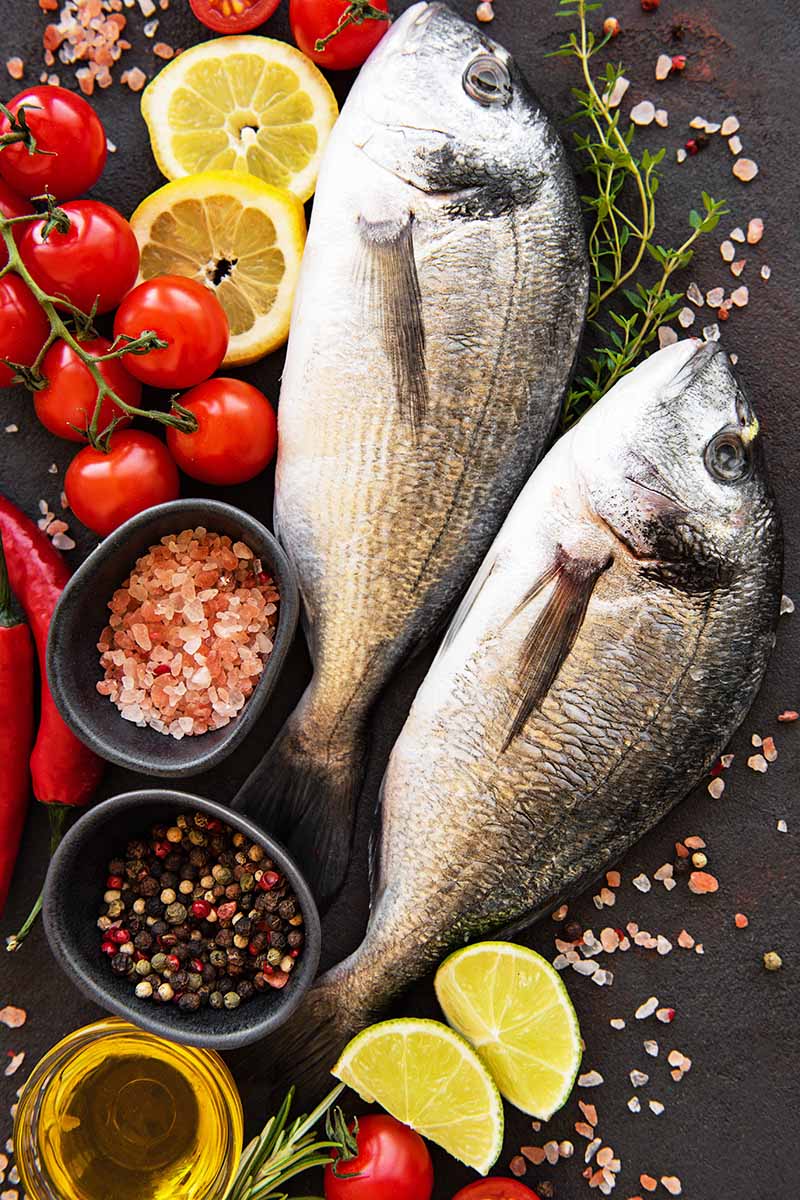
This classic method is very simple and requires only parchment paper or foil, and your favorite ingredients for flavoring.
The packets are comprised of fillets or slabs of fish that are wrapped up with seasonings and perhaps a splash of liquid, then baked on a baking sheet in a hot oven.
As it bakes, the seafood in the packet will quickly, but gently, steam in its own juices with the seasonings, causing the flavors to blend and intensify.
You can even think beyond the oven to apply this method – we have a way to cook salmon en papillote using your slow cooker!
Fillets work better than steaks for en papillote style cooking, because the flesh around the bone of a steak will take longer to cook than the thinner tips.
And smaller packets work better than large ones. If you’re cooking for a family, make two or three packets rather than trying to get everything into one.
Cook fillets on their own with some seasonings, or add veggies to the packet for a complete meal.
If you do add vegetables, cut them all to a uniform size for even cooking time. Harder veggies such as carrots, potatoes, or onions should be very thinly sliced or finely julienned, to ensure that all ingredients are ready at the same time – a mandoline or a spiralizer works well for veggies cooked in this style.
While most fish will have adequate moisture to steam on their own, adding a bit of liquid never hurts. Here are a few suggestions for introducing both flavor and moisture:
- Thin slices of lemon
- A pat of salted butter
- A drizzle of olive oil, wine, coconut milk, or soy sauce
- A little miso, vegetable, or seafood stock (even chicken stock or broth works in a pinch)
Place the fish still wrapped inside its packaging directly on dinner plates and bring them to the table. Allow your diners to open up the packaging themselves, as you don’t want anyone to miss out on the cloud of fragrant steam that’s released when these are opened.
But use caution – that steam is hot!
Fantastic Fish
With our helpful advice and creative recipe suggestions, you can confidently roll up to the fish counter, knowing exactly how you will prepare and cook your fish selection.
Grilling kebabs? Baking tilapia? Poaching salmon? You know what to do now to make a stellar dinner!
These seven ideas will come in handy particularly on those special occasions when you want to showcase seafood, such as a Christmas Eve Feast of the Seven Fishes.
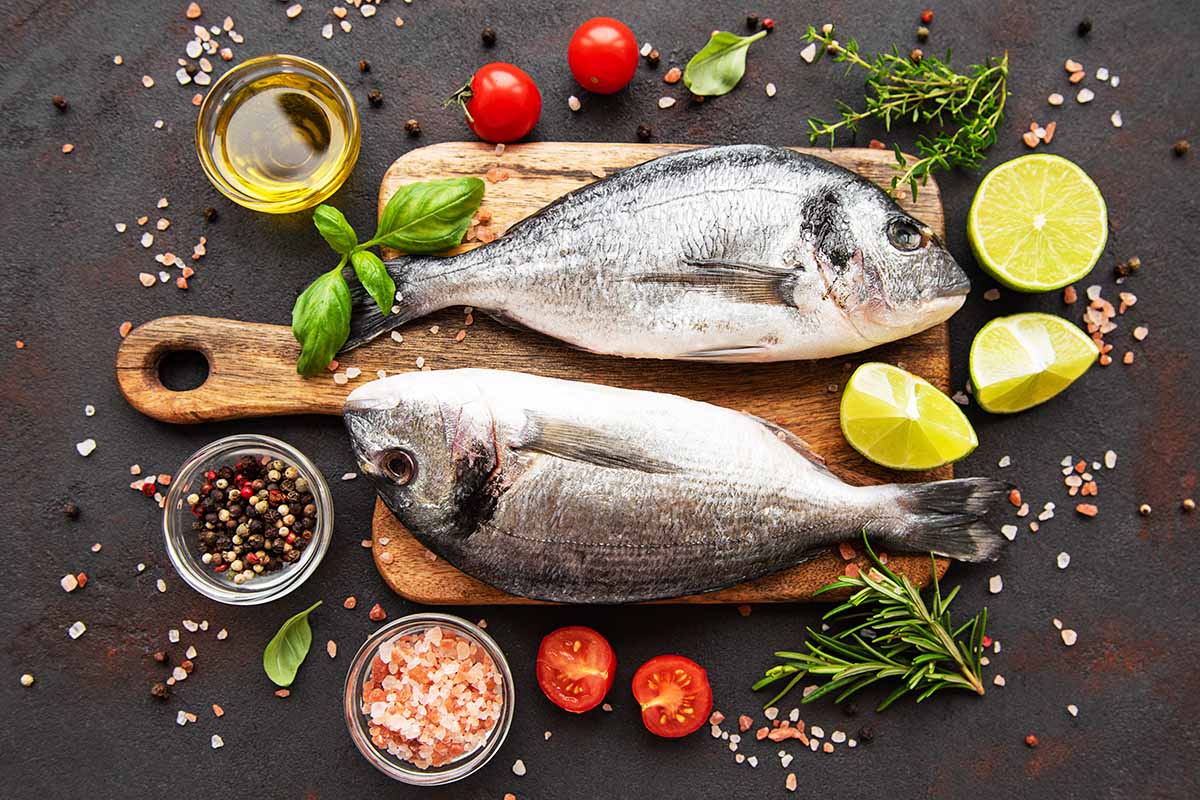
Remember to resist the temptation to overcook fish – its delicate texture will dry out quickly, and the flavor and texture are best when it’s still moist with natural juices.
If you’re ready to continue your education in the kitchen, let our full collection of tutorials guide you. Read these articles next to learn how to expertly prepare other tricky main entrees:
- How to Peel and Devein Shrimp
- How to Purchase and Cook Prime Rib
- How to Cook a Whole Chicken in the Electric Pressure Cooker
Photos by Meghan Yager, Fanny Slater, and Nikki Cervone, © Ask the Experts, LLC. ALL RIGHTS RESERVED. See our TOS for more details. Product photos provided by BBQ Guys. Uncredited photos via Shutterstock. Originally published on February 14, 2016. Last updated on October 21, 2023. With additional writing and editing by Nikki Cervone.
About Lorna Kring
Recently retired as a costume specialist in the TV and film industry, Lorna now enjoys blogging on contemporary lifestyle themes. A bit daft about the garden, she’s particularly obsessed with organic tomatoes and herbs, and delights in breaking bread with family and friends.

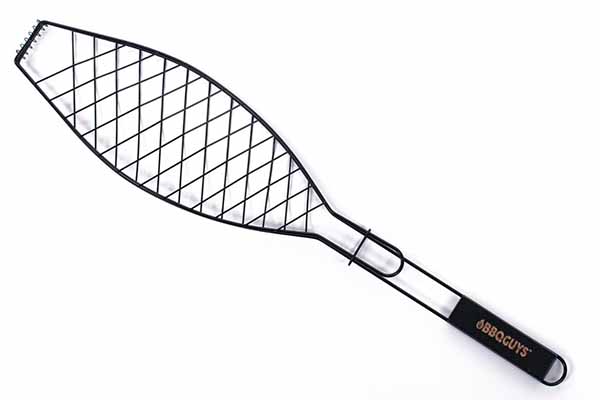
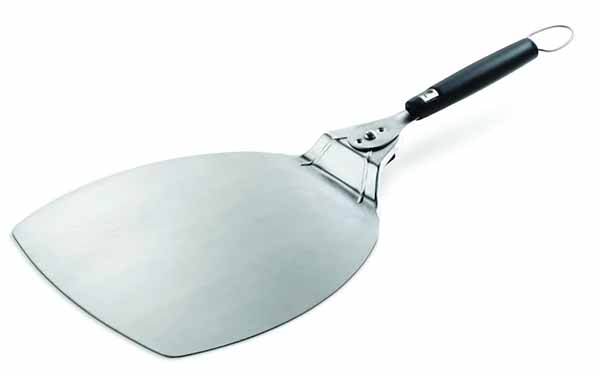
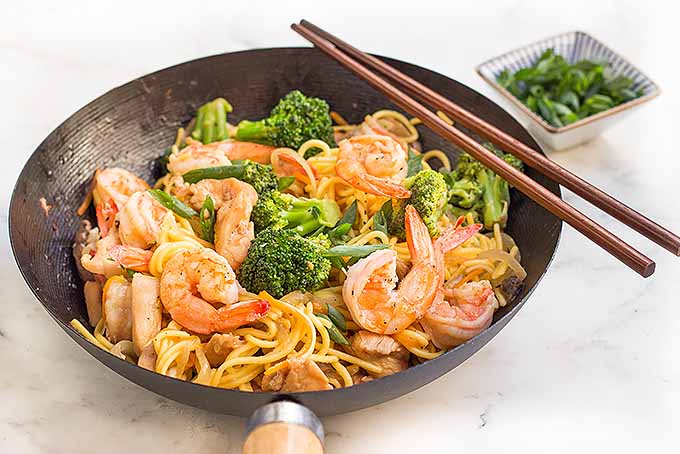
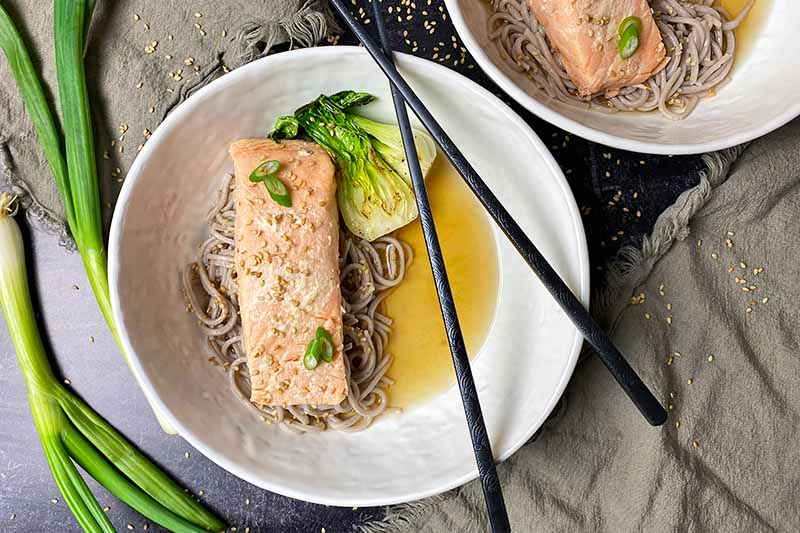
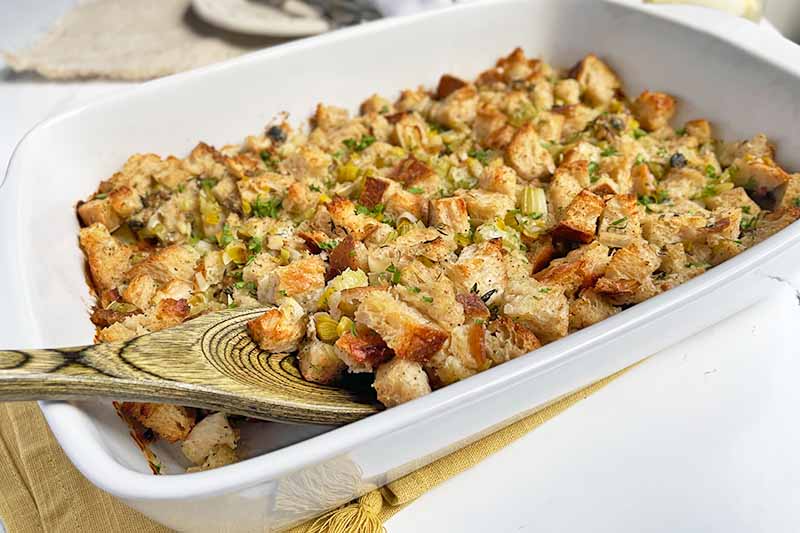
My dad loves fish, though he doesn’t eat it nearly as much as I think he should. His favorite ways of cooking them are grilling and poaching. As you said, poaching is a great way to keep in a lot of the moisture while grilling keeps in the natural flavoring and adds some of that nice barbecue flavor. Only problem with grilling is that he always tends to mutilate them on the grill since they stick so much. We’ve started using aluminum foil to help prevent that, but it doesn’t taste the same. The basket seems like a great idea, though. I’ll have to look into that when it finally gets warm enough to grill.
You’re right Tsuzuko, foil on the grill does change the flavor, and unfortunately, not for the better… and grilling fish does require a bit of attention so as not to ‘mutilate’ them!
A basket’s an easy solution, and there’s lots of nice ones available at reasonable prices – maybe a good Father’s Day gift for your Dad?!
Baking and grilling are my favorite methods of preparing fish: especially salmon. I love to use lemon and herbs. I really like how the lemon wedges were stuffed into the fish in picture at the top. I’m sure that’s an effective way of injecting flavor. Great suggestions! Thank you.
Salmon, lemon, and herbs are a wonderful combination mbrougham11, and so easy to do on the grill! Glad you liked the post.
You definitely sensitized ,y tastebuds just by reading this article. I’m usually just a fry fish type of person because it’s easy of coarse but I’m definitely looking forward to trying all these with my fish.
Glad you found some ideas Zhen25, I hope some of them will satisfy those taste buds!
Poaching hasn’t been a method that I’ve used before, and I don’t know why, because it sounds so easy and delicious. I love broiling fish (salmon is my favorite) and grilled fish is good too, but I’ll have to include poaching as a way to cook fish too.
Poaching’s a nice method for winter months atlmom5, and you can infuse the liquid with as much, or as little, flavor as you like. And as with grilling and broiling, it’s quick and easy too!
I’m a big fan. I like many varieties, but I have to admit, I do enjoy the rich sauces and stuff. I’ll have to be a bit more careful with my preparation techniques and my embellishments in the future.
I really need one of those baskets for the grill. That looks great! So much simpler than other methods. I plan to do a lot of grilling this summer.
One of the great aspects of fish is that they don’t need those rich sauces, and I think we tend to add those more out of habit than anything else… and do pick up a basket if you’ll be grilling a lot fish Zyni, they make the process so much easier!
This is a wonderful guide. I’d like to cook more fish at home but for some reason the process has always seemed a bit intimidating. The papillote method sounds delicious and so simple! Easy to make for two people as well, which is always important for me in a recipe.
I’d like to try deep frying too, once I feel a fit more confident cooking seafood. My parents always deep fried in a big pot with lard and it was so good, I definitely want to try to replicate that 🙂
Glad you enjoyed the guide cck, most things are a bit intimidating if we’re unfamiliar with the process, it just takes a bit of practice to build up that confidence… And en papillote is an ideal method for dinner for two. Hope you like the results!
I’ve always loved eating fish but never learned how to cook it other way than just put it in an oven or grilled it in summer. Deep fried fish indeed sounds good but hard to make, so even when I’d love to try that out I’m not sure do I have the courage, haha! Oil is annoying to work with and deep frying can end up being bad if you’re not careful enough. Probably I just have to stick with fried fish that you can get from the store!
Deep frying does take a certain level of care and attention to get the best results heavymetalkilos, but so do most methods. And there’s nothing wrong with going to your favorite fish ‘n chip shop for when you do want a fry up!
I am indeed embarrassed to admit that I was born and grown up on an island and I have ever really properly learned how to prepare fish and seafood. I love EATING them, but prepping is something I never bothered with. Recently moved back home to be with my family and being fully grown up now, realize how terrible it is that I never bothered to learn.
I had a very nice fisherman offer me some tips on ins and outs of picking good fish at the market. Fish cleaned. Now I needed to tackle the daunting task of preparing it. I was so nervous at first. My only experience with fish was watching my mom dump various kinds of fish into a pot with stock to make us some delicious fish soup.
Being the chicken I was, I invited a friend over to show me how to. Surprisingly, I took to it, like a fish in the sea (ha). That was a year ago. Now I have no qualms about buying my family and I the freshest available catch and cooking them up various ways.
I do like that you have the technique listed here of steaming in a parchment. I imagine that would keep in all the juices and flavors. This is definitely going to be tonight’s dinner. Thank you very much on this informative read.
Well, we always seem to learn these things when the time is right for us aquaticneko!
And you’re right, cooking in parchment packets is wonderfully juicy, flavorful, and fragrant! Hope you enjoy your dinner!
Every Friday is fish day and we get to eat some of our favorite fish dinners. Most of the time it is baked or a tuna salad sandwich….I rarely fry fish. I agree fish is so healthy and light it is good on the wallet and the hips…great tips on achieving a moist fish. Olive oil and garlic butter are just simply marvelous on fish.
We do fish Friday too!
I am guilty of almost always frying it….
I think your right it’s probably better for health and finances not too eat it deep fried so often.
I have En Papillote style at the market before, didn’t realize it was literally in a little packet!
Looks easier then I had imagined, figured it was some fancy French style.
Glad
Lorna cleared that one up for us, I know exactly what’s for dinner this weekend, thanks!
Light on the hips and wallet indeed! Glad you enjoyed the tips sheebah7!
Great information. We love seafood. I usually find a specific recipe to use when cooking fish, but with these general guidelines and tips, I should be able to cook any fish without the need of a recipe. I can’t wait to go to the market, pick out a whole one, and try out these methods. Thanks.
… and seafood loves you lebrennan! Glad you enjoyed the post, and let us know what kind of results you get.
Those a wonderful lessons as fish is not exactly everyone’s favorite, some of the ideas can be implemented especially when yo have picky eaters of fish.
Not everyone’s favorite, and if cooked poorly, poor fish doesn’t stand a chance of becoming popular! Glad you enjoyed the ideas HaA.
Well, my mom really has to read this, for god sake! This is simply amazing, now my mom will definitely know how to cook the best fish ever. I will buy some fish this weekend so she can make her magic with these tips, thank you for sharing this!
You sound like a true fish lover Casiox! Enjoy!
Thanks for the recipe.